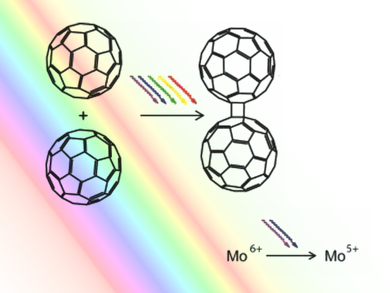Organic photovoltaic (OPV) cells use thin films of fullerene (C60) and molybdenum oxide (MoO3) as the electron acceptor and hole extraction interfacial layer. For these cells power conversion efficiencies of 8–10 % have been reported. However, the initial performance is not maintained during illumination and increasing the life time of OPVs still is a challenge for practical applications. It is known that light induces color changes in MoO3 (photochromism), as well as the formation of intermolecular bonds in a [2+2] cycloaddition between the fullerene molecules (photopolymerization).
Roland Hany, Swiss Federal Laboratories for Materials Science and Technology, Laboratory for Functional Polymers, Dübendorf, Switzerland, and colleagues analyzed the impact of the before-mentioned reactions on the performance and long-term stability of OPV cells. A degradation process at the organic heterojunction was identified and the formation of Mo5+ species during the illumination was found, which affect the performance of the OPV severely.
Therefore light processing for several hours is a necessary step before the actual performance of OPV cells can be measured with certainty.
- Photochemical Transformations in Fullerene and Molybdenum Oxide Affect the Stability of Bilayer Organic Solar Cells,
Hui Zhang, Andreas Borgschulte, Fernando A. Castro, Rowena Crockett, Andreas C. Gerecke, Okan Deniz, Jakob Heier, Sandra Jenatsch, Frank Nüesch, Carlos Sanchez-Sanchez, Alina Zoladek-Lemanczyk, Roland Hany,
Adv. Energy Mater. 2014.
DOI: 10.1002/aenm.201400734


